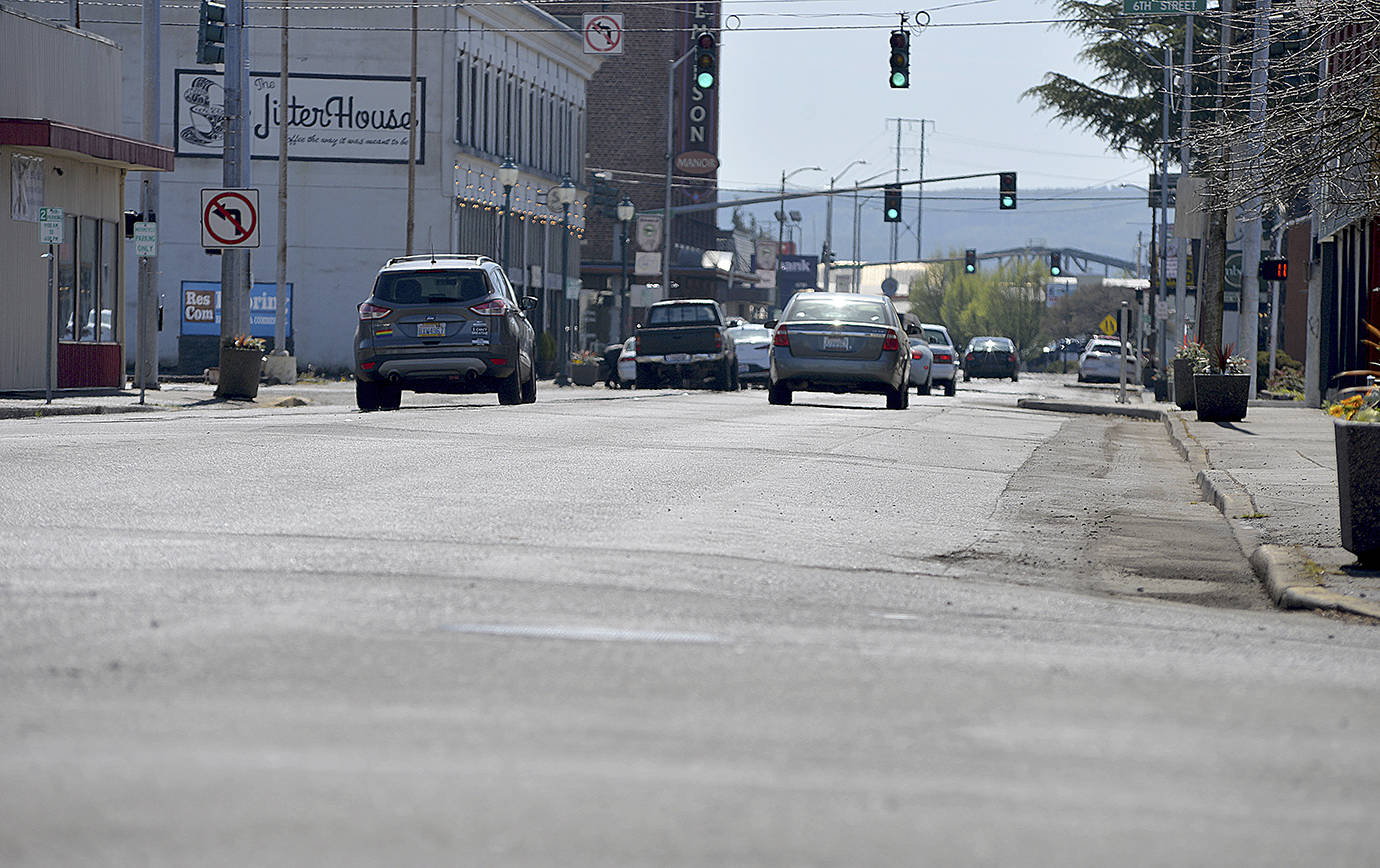Delayed for a year by COVID-19, a 4-plus-mile state Department of Transportation paving project on eastbound Highway 101 from Central School in Hoquiam to the eastern edge of downtown Aberdeen will get underway Monday, May 3.
“The state’s paving project along Highway 101 will provide much-needed preservation of the roadway surface,” said Aberdeen City Engineer Kris Koski. “Besides the direct benefit of putting down new asphalt, in 2020 the project also rebuilt all sidewalk curb ramps along the route that were not ADA compliant.”
Rognlin’s Construction finished the replacement of about 150 sidewalk ramps last spring. The City of Hoquiam at the same time spent $800,000 to replace city sidewalks through downtown and farther down to Myrtle Street. The city also made some major water and storm system improvements so they wouldn’t have to tear up the streets for them after the state paving project.
“When the city learned of this planned project back in 2016, well over $1 million was allocated to replace aging water mains on Simpson Avenue in the historic downtown and on the east side of the Simpson Avenue Bridge before the paving,” said Hoquiam City Administrator Brian Shay. “The city also installed a major storm system improvement at Simpson and Ontario and replaced several blocks of sidewalks on the east side of town.”
The work will go much like the sidewalk ramp construction went last year, starting at Fifth Street and State Route 109 in Hoquiam and progressing to H Street in Aberdeen. Work is expected to be complete by July, according to the Department of Transportation. Funding for the project comes from state pre-existing funds of just over $7.5 million and state Connecting Washington Account funds in the amount of $136,000.
Rognlin’s crews also did some pavement repairs since the spring of 2020 to make the roadway a little more drivable, with the paving itself pushed back a year because of construction limitations early in the pandemic. Last fall, Department of Transportation crews also replaced worn expansion joints on the Hoquiam River bridge.
For this final phase, the Department of Transportation said there will be overnight lane closures with flaggers for the grinding and paving activities. The weather-dependent work will be done primarily during overnight hours to minimize traffic impacts; neighbors to the roadway will notice increased overnight noise during the project.
“Once the new pavement is installed, the state’s contractor will apply new lane striping. The new striping will include vehicle travel lanes that are 11 feet wide, down from current lane widths of 11.5 to 12 feet along Simpson Avenue and Park Street, and down from 12 feet or higher along Heron Street,” said Koski. Lanes 11 feet wide still accommodate large semi trucks and RVs while providing a little extra space for street parking.”
The narrower lanes could also provide a minor “speed-calming effect,” said Koski. “A speed study performed in 2019 showed that 90% of vehicles exceeded the posted speed limit of 30 mph along Simpson Avenue. A simple and low-cost measure to discourage excessive speeding is by providing lane widths that are appropriate for the roadway’s function and design speed.”
The project will have economic and community benefits as well, said Shay.
“Having this rejuvenated road system with smooth asphalt from downtown Hoquiam to east Aberdeen will enhance our community and economic development efforts, particularly for those homes and businesses along the route,” said Shay. “While it has been five years in the making, the cumulative efforts of (the State Department of Transportation), the cities of Hoquiam and Aberdeen, and the Washington Transportation Improvement Board has made a significant long-term positive impact on our community.”


